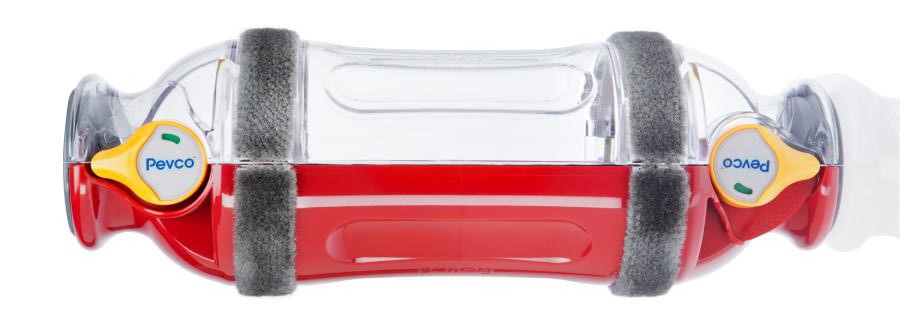Educating product managers on how plastics affect your brand

The material you choose for your medical devices can have a big impact on your brand’s image. In today’s healthcare environment, not all plastics can withstand exposure to the aggressive disinfectants being used in hospitals. If your device is showing outward signs of suffering from exposure to effects of disinfection, including yellowing, cracking, crazing, or paint peeling, it’s time to reconsider material selection.
- Read more about Educating product managers on how plastics affect your brand
- Log in or register to post comments
Thank You for Asking
“How environmentally friendly is Eastman MXF221 copolyester?”
Eastman strives to create solutions that offer more value with less environmental impact.
MXF221 copolyester is one of our many environmentally responsible offerings that meets
industry standards for safety and sustainability. Some of its innovative properties include:
- It’s made without BPA, halogens, or ortho-phthalate plasticizers.
- Its toughness and durability can potentially increase product life and reduce waste.
- The flame-retardant additives used in do not contain antimony, bromine, or chlorine.
- It’s suitable for transducer housing applications that require contact with the skin.
- Read more about Thank You for Asking
- Log in or register to post comments
Secondary Operations: Adhesive Bonding
Consider these characteristics when selecting an adhesive:
- Chemical compatibility with parts being joined
- Aesthetics of the finished joint
- Expansion/contraction with temperature changes (NOTE: if expansion/contraction are a major concern, consider mechanical fasteners.)
- Brittleness, rigidity, flexibility
- Durability/service life
- Adhesive strength (adhesion to the plastic)
- Cohesive strength (resistance to internal tearing)
- End-use requirements
Eastman Tritan™ copolyester offers outstanding chemical resistance and has been studied with many adhesives and different bonding procedures.
Adhesive bonding procedures for Eastman Tritan™ copolyester
When adhesive bonding parts made with Tritan, joining surfaces should:
- Fit well without forcing
- Have no visible gaps
- Read more about Secondary Operations: Adhesive Bonding
- Log in or register to post comments
Secondary Operations: Overmolding

The use of overmolded soft-touch materials is commonly employed to add both functional and decorative elements to articles produced from rigid thermoplastic elastomers (TPE). Eastman Tritan™ copolyester demonstrates excellent adhesion with commercially available TPE grades. Before selecting the TPE grade for use, work with either the TPE supplier or Eastman to choose a grade which is formulated for use with a copolyester substrate—and designing your part for successful results.
Part design considerations:
- Optimize part thickness and TPE thickness for adhesion and dimensional stability. TPE thickness in excess of the Eastman Tritan™ copolyester part thickness could result in warpage when you remove it from the mold. The typical rule of thumb recommends a substrate thickness twice that of the TPE.
- Mechanical interlocks can be incorporated to improve TPE adhesion and promote part durability. Mechanical interlocks become particularly important with thin TPE layers or very demanding fitness-for-use requirements.
- For designs incorporating soft-touch features on multiple surfaces, flow-through designs should be used to improve adhesion and durability.
- To minimize the potential for peeling or delamination, the edge of the TPE should be flush with or below the level of the non-overmolded section of the rigid substrate.
- Read more about Secondary Operations: Overmolding
- Log in or register to post comments
Troubleshooting Focus: Flashing
To help ensure continued molding success, this blog focuses on three different types of flashing problems, their possible causes, and corrective actions you can take for each.
- Read more about Troubleshooting Focus: Flashing
- Log in or register to post comments





 Close
Close


